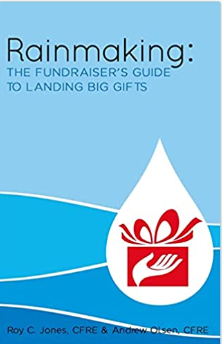Direct marketing today messages focus on the donors’ data, giving history and areas of interest to tailor communications to each individual or groups of groups who share particular interests. Annual planning for channel integration creates communications to actionable segments designed to predict and produce specific results. These results are based upon pre- and post-campaign analytics and measurement analysis.
ARE YOU COUNTING ALL THE MONEY ON THE TABLE?
Channel integration requires that a complete history be kept on every donor in your database that allows you to set objectives for future performance and results. Fundraising pros, the time has come to stop siloing your reporting and begin looking at the entire picture of your donors experience.
Steve Jobs said: “You have to start with the customer experience and work backwards to the technology.”
Based on my analysis of more than 70 charities over the last five years, we know that supporters who participate in more than one channel, engage in more than one activity tend to be much more valuable. Donors give as much as 3-4 times (yes, that’s right more than 300%) more than those who don’t. Multi-channel donors are more likely to move to other channels/offers. They have a higher retention rate than others. Multi-channel donors are for all intents and purposes an organization’s biggest fans and loyalists.
Understand that your donors no longer look at their giving by the channel in which they were contacted. A donor is just as likely to go on line to “transact” their donation after receiving a “snail mail” letter as they are returning the pre-printed BRE or CRE. Some studies now document as much as 80% of all on line gifts are driven there from good old fashion direct mail. Use a “match back” report every month to properly attribute on line gifts that are driven to the web by your appeal. Create an WEB segment for every appeal you do. You will find that some appeals, often those with a hard deadline, drive more gifts to your on line giving page.
As importantly, don’t forget that the larger the gift the more likely it is that a donor will use their own envelope and stamp. Even donors who give just above the $100 range are more likely to use their own envelope. Why? They often summize that pre-printed reply devices or on line forms go to a processing center first. They want to make sure the the CEO actually opens their envelop to see their BIG gift personally. The industry commonly refers to this income as “white mail” because the donors envelopes are usually just plain, white. Every appeal you do should have a segment to measure how much white mail the campaign generated. Some folks struggle with attribution of white mail. However, the solution is simple. Use a “match back” each month to compare those who received an appeal based upon the in home date or email open date, if they gave after receiving of the appeal credit the donation to that appeal.
Remember, too, that some of your best donors only ever use the reply envelope that you include in your thank you receipt mail. Yes, it is true! Every file I have ever conducted an audit on have a small cadre of donors who only use the envelopes in their receipt mail. Why? The conclusion donors tell me is that they appreciate being thanked. Most donor service departments will tell you that so often donors will get a mailing or email and they send their donation in to the charity in the reply envelope that was sent to them in their last thank you/receipt letter. It is not unusually to see gift receipt reply envelopes being used that are several years old. Make no mistake about it, while donors all say they do not want to be thanked… they all lie! Once again, use a “match back” each month to compare those who received an appeal based upon the in home date or email open date, if they gave using the receipt reply or receipt envelope credit the donation to the main appeal. Many charities even code their receipt envelopes so they can properly attribute the original appeal that sparked the second donation.
Receipt mail, if done properly, can create a significant additional revenue stream for your charity. I have tested response times and second gifts from thank you letters, and trust me, there is a direct correlation between the two. If your thank you receipt is sent to the donor within 48 hours, 25% will send a second gift (if you include a reply envelop and a unique, personalized thank you). If you delay sending the thank you 72 hours the response rate drops to 10% and if you wait 7 to 10 days the response rate drops to 5% and if it take you 10 to 14 days or more… you will not see a measurable impact of second gifts to your appeal.
Make sure that you change the copy every month of your receipt/thank you letter. Also, always use first class postage. Hold them mail to batch for automation rates is a HUGE mistake.
Take some time this week to retool your reporting, create an annual plan for integration. What are you doing to drive donors to give in more than one channel? What are you doing to measure their responses correctly? Are you counting all the money on the table?


